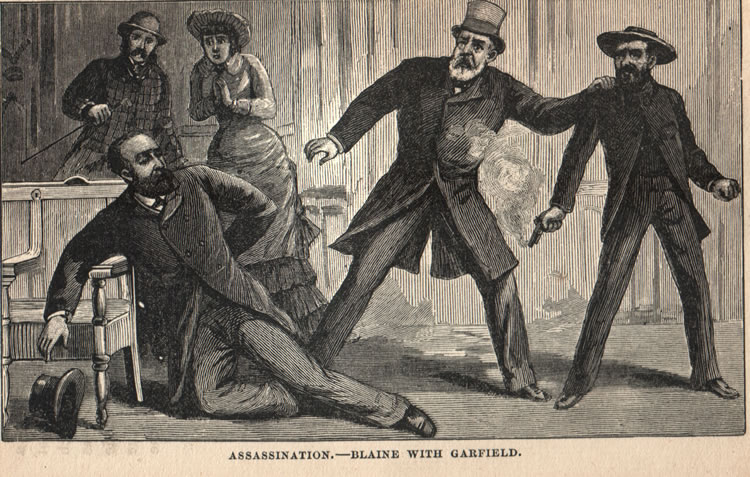
Only four months into his administration, President James A. Garfield is shot as he walks through a railroad waiting room in Washington, D.C. His assailant, Charles J. Guiteau, was a disgruntled and perhaps insane office seeker who had unsuccessfully sought an appointment to the U.S. consul in Paris. The president was shot in the back and the arm, and Guiteau was arrested.
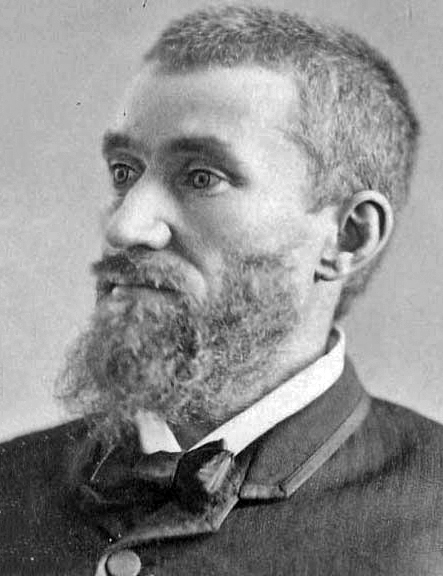
Garfield, mortally ill, was treated in Washington and then taken to the seashore at Elberon, New Jersey, where he attempted to recuperate with his family. During this time, Vice President Chester A. Arthur served as acting president. On September 19, 1881, after 80 days, President Garfield died of blood poisoning. The following day, Arthur was inaugurated as the 21st president of the United States.

Garfield had three funerals: one in Elberon; another in Washington, where his body rested in state in the Capitol for three days; and a third in Cleveland, Ohio, where he was buried. Charles Guiteau's murder trial began in November, and in January 1882 he was found guilty and sentenced to death. In June 1882, he was hanged at his jail in Washington.
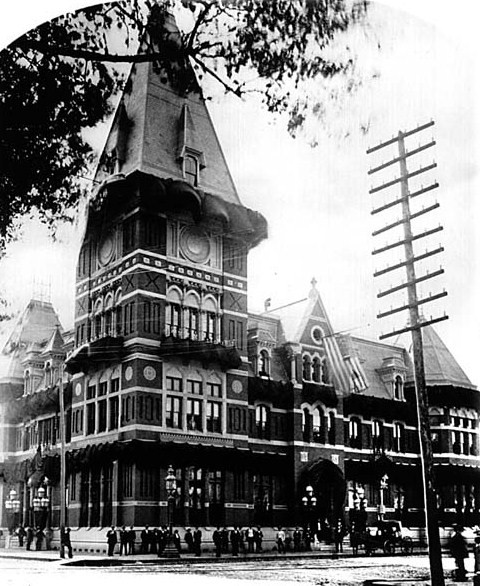
The assassination of President James A. Garfield took place in Washington, D.C. on July 2, 1881. Garfield was shot by Charles J. Guiteau at 9:30 am, less than four months into Garfield's term as the 20th President of the United States. Garfield died eleven weeks later on September 19, 1881, the second of four Presidents to be assassinated, following Abraham Lincoln and preceding William McKinley and John F. Kennedy. His Vice President, Chester A. Arthur, succeeded Garfield as President. Garfield also lived the longest after the shooting, compared to other presidents. Lincoln and Kennedy died less than a day after being shot, and McKinley died a week later.
Bullying the President
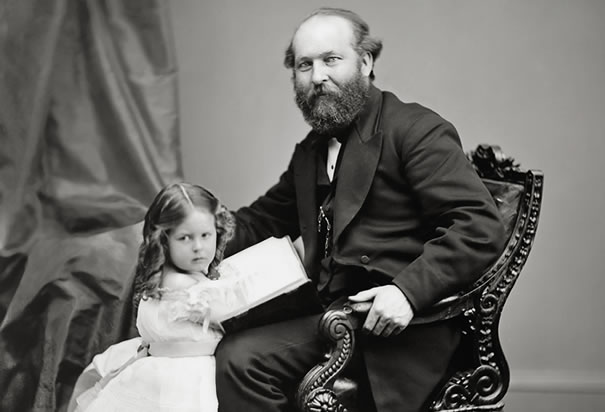
Guiteau's family had judged him to be insane in 1875 and attempted to have him committed, but Guiteau escaped.[8] Now his mania took a violent turn. After the encounter with Blaine, Guiteau decided that he had been commanded by God, he is quoted in saying, "I leave my justification to God..."[9] to kill the ungrateful President. Guiteau borrowed $15 and went to purchase a revolver. He knew little about firearms, but knew that he would need a large caliber gun. He chose to buy an ivory-handled .44 Webley British Bulldog revolver over a similar wooden-handled Webley because he thought it would look good as a museum exhibit after the assassination.[10] (The revolver was recovered and displayed by the Smithsonian in the early 20th century but has since been lost.[11]) He spent the next few weeks in target practice—the kick from the revolver almost knocked him over the first time[10]—and stalking the President. He wrote a letter to Garfield, saying that he should fire Blaine, or "you and the Republican party will come to grief."[12] The letter was ignored, as was all the correspondence Guiteau sent to the White House.

Guiteau continued to prepare carefully, writing a letter in advance to Commanding General of the United States Army William Tecumseh Sherman asking for protection from the mob,[13][14] and writing other letters justifying his action as necessary to heal dissension between factions of the Republican Party.[15] He went to the District of Columbia jail, asking for a tour of the facility to see where he'd be incarcerated. (He was told to come back later.)[16] Guiteau spent the whole month of June following Garfield around Washington. On one occasion, he trailed Garfield to the railway station as the President was seeing his wife off to a beach resort in Long Branch, New Jersey, but he decided to shoot him later, as Mrs. Garfield was in poor health and he did not want to upset her.[17][18]
Assassination
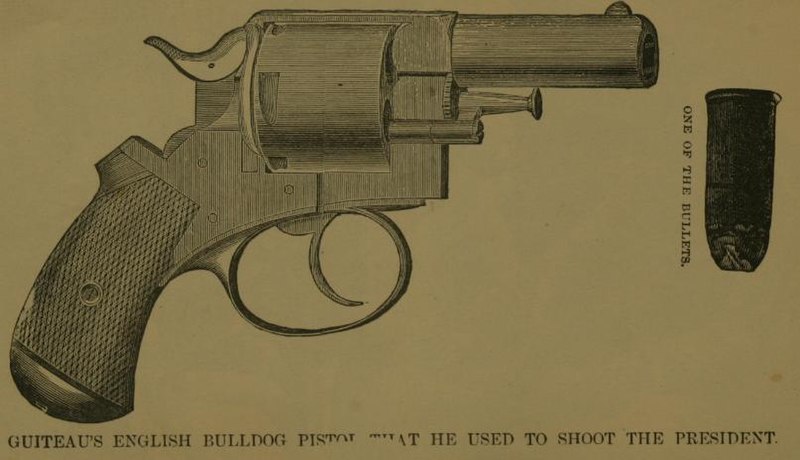


As President Garfield entered the waiting room of the station Guiteau stepped forward and pulled the trigger from behind at point-blank range. "My God, what is that?" Garfield cried out, flinging up his arms. Guiteau fired again and Garfield collapsed.[21] One bullet grazed Garfield's shoulder; the other hit him in the back, passing the first lumbar vertebra but missing the spinal cord before coming to rest behind his pancreas.[22]
Guiteau put his pistol back in his pocket and turned to leave the station for the cab he had waiting outside, but he was apprehended before he could leave by policeman Patrick Kearney, who was so excited at having arrested the man who shot the president that he neglected to take Guiteau's gun from him until after their arrival at the police station.[23] The rapidly gathering crowd screamed "Lynch him!" but Kearney took Guiteau to the police station a few blocks away.[21] As he surrendered to authorities, Guiteau uttered the exulting words, repeated everywhere: "'I am a Stalwart of the Stalwarts! I did it and I want to be arrested! Arthur is President now!'"[24] This statement briefly led to unfounded suspicions that Arthur or his supporters had put Guiteau up to the crime.[25] The Stalwarts were a Republican faction loyal to ex-President Grant; they strongly opposed Garfield's Half-Breeds.[26] Like many Vice Presidents, Arthur was chosen for political advantage, to placate his faction, rather than for skills or loyalty to his running-mate. Guiteau, in his delusion, had convinced himself that he was striking a blow to unite the two factions of the Republican Party.[27]
Garfield's suffering and death
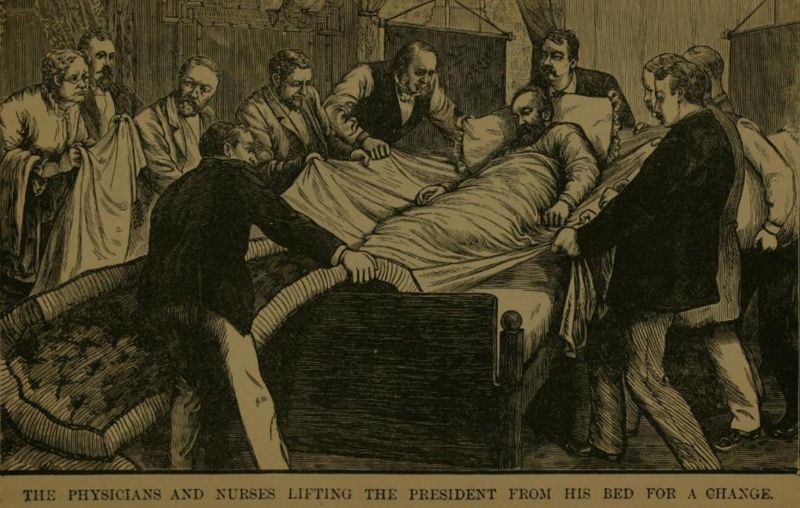
Garfield, conscious but in shock, was carried to an upstairs floor of the train station.[28] One bullet remained lodged in his body, but doctors could not find it.[29] His son, James Rudolph Garfield and James Blaine both broke down and wept. Robert Todd Lincoln, deeply upset and thinking back to the death of his father, said "How many hours of sorrow I have passed in this town."[29]
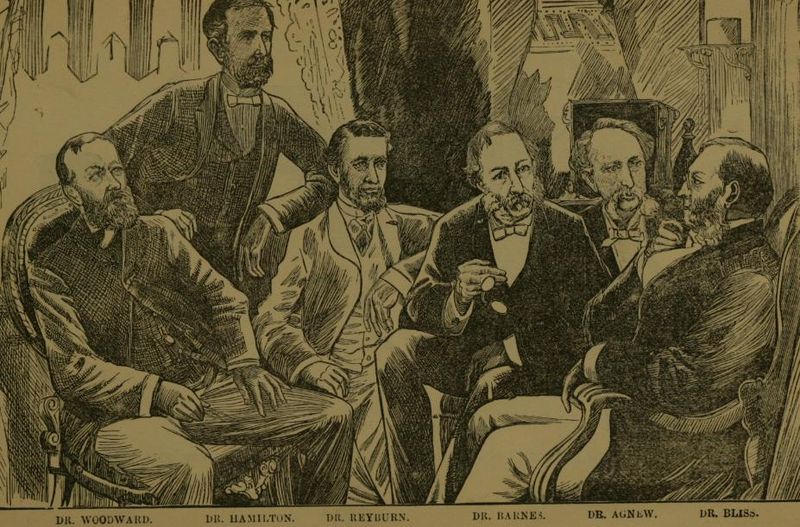
Garfield was carried back to the White House. Although doctors told him that he would not survive the night, the President remained conscious and alert.[30] The next morning his vital signs were good and doctors began to hope for recovery.[31] A long vigil began, with Garfield's doctors issuing regular bulletins that the American public followed closely throughout the summer of 1881.[32][33] His condition fluctuated. Fevers came and went. Garfield struggled to keep down solid food and spent most of the summer eating little, and then only liquids.[34]

In an effort to relieve the sick man from the heat of a Washington summer, Navy engineers rigged up an early version of the modern air conditioner. Fans blew air over a large box of ice and into the President's sickroom; the device worked well enough to lower the temperature twenty degrees.[35] Doctors continued to probe Garfield's wound with dirty, unsterilized fingers and instruments, attempting to find the location of the bullet.[36] Alexander Graham Bell devised a metal detector specifically for the purpose of finding the bullet lodged inside Garfield, but the metal bed frame on which Garfield lay made the instrument malfunction.[37] Because metal bed frames were relatively rare, the cause of the instrument's deviation was unknown at the time. On July 29, Garfield met with his Cabinet for the only time during his illness; the members were under strict instruction from the doctors not to discuss anything upsetting.[38] Garfield became increasingly ill over a period of several weeks due to infection, which caused his heart to weaken. He remained bedridden in the White House with fevers and extreme pains. Garfield's weight dropped from over two hundred pounds to 135 pounds as his inability to keep down and digest food took its toll.[39] Because of his inability to digest food, nutrient enemas were given in an attempt to extend his life.[40] Blood poisoning and infection set in and for a brief period the President suffered from hallucinations.[41] Pus-filled abscesses spread all over Garfield's body as the infections raged.[42]

On September 6, Garfield was taken to the Jersey Shore to escape the Washington heat, in the vain hope that the fresh air and quiet there might aid his recovery.[41] Garfield was propped up in bed before a window with a view of the beach and ocean.[43] New infections set in, as well as spasms of angina. He died of a ruptured splenic artery aneurysm,[44] following blood poisoning and bronchial pneumonia, at 10:35 pm on Monday, September 19, 1881, in Elberon, New Jersey. The wounded president died exactly two months before his 50th birthday and remains one of the only two Presidents who died before their 50th birthday, the other being John F. Kennedy, who was also assassinated when he was just 46 years and 177 days old. During the eighty days between his shooting and death, his only official act was to sign an extradition paper.

Most historians and medical experts now believe that Garfield probably would have survived his wound had the doctors attending him been more capable.[45][46] Unfortunately for Garfield, most American doctors of the day did not believe in anti-sepsis measures or the need for cleanliness to prevent infection.[47] Several inserted their unsterilized fingers into the wound to probe for the bullet, and one doctor punctured Garfield's liver in doing so. Also, self-appointed chief physician D. Willard Bliss and the other doctors had guessed wrong about the path of the bullet in Garfield's body. They had erroneously probed rightward into Garfield's back instead of leftward, missing the location of the bullet but creating a new channel which filled with pus. The autopsy not only discovered this error but revealed pneumonia in both lungs and a body that was filled with pus due to uncontrolled septicemia.[48]

Chester Arthur was at his home in New York City when word came the night of September 19 that Garfield had died. After first getting the news, Arthur said "I hope—my God, I do hope it is a mistake." But confirmation by telegram came soon after. Arthur took the presidential oath of office, administered by a New York Supreme Court judge, then left for Long Branch to pay his respects before going on to Washington.[49]
Garfield's body was taken to Washington, where it lay in state for two days in the Capitol Rotunda before being taken to Cleveland, where the funeral was held on September 26.[50]
Guiteau's trial and execution
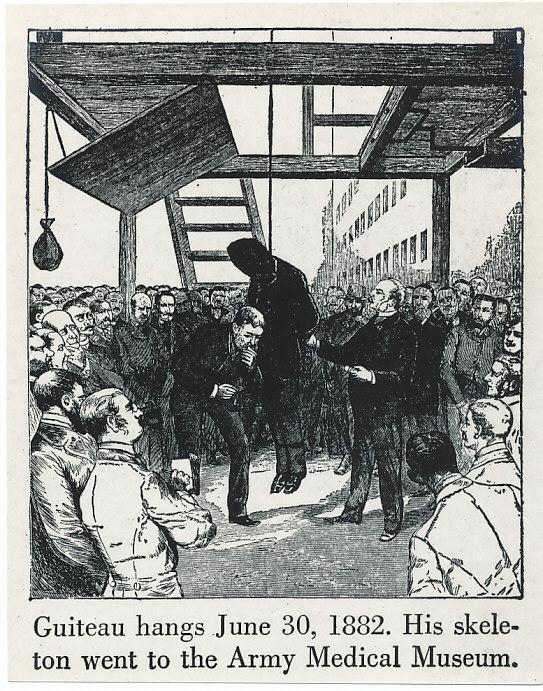
Guiteau's trial was one of the first high profile cases in the United States where the insanity defense was considered.[56] Guiteau vehemently insisted that while he had been legally insane at the time of the shooting, he was not really medically insane, which was one of the major causes of the rift between him and his defense lawyers and probably also a reason the jury assumed Guiteau was merely trying to deny responsibility.

To the end, Guiteau was actively making plans to start a lecture tour after his perceived imminent release and to run for President himself in 1884, while at the same time continuing to delight in the media circus surrounding his trial. He was dismayed when the jury was unconvinced of his divine inspiration, convicting him of the murder. He was found guilty on January 25, 1882.[57] He appealed, but his appeal was rejected, and he was hanged on June 30, 1882 in the District of Columbia. At his execution, Guiteau famously danced his way up to the gallows and while on the scaffold he waved at the audience, shook hands with his executioner and, as a last request, recited a poem he had written called "I am Going to the Lordy".[58] He had requested an orchestra to play as he sang his poem, but this request was denied.
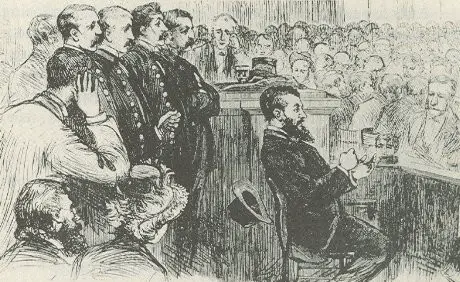
Aftermath
Part of Charles Guiteau's preserved brain is on display at the Mütter Museum at the College of Physicians of Philadelphia.[59] Guiteau's bones and more of his brain, along with Garfield's backbone and a couple of ribs, are kept at the National Museum of Health and Medicine in Washington, D.C. on the grounds of the Walter Reed Army Medical Center.[60]
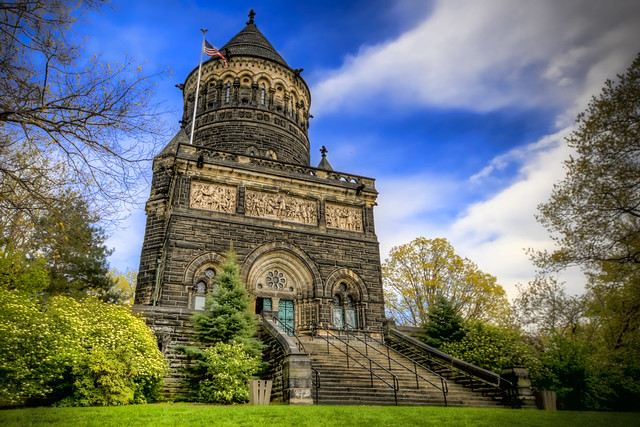
Garfield's assassination was instrumental to the passage of the Pendleton Civil Service Reform Act on January 16, 1883. Garfield himself had called for civil service reform in his inaugural address[61] and supported it as President in the belief that it would make government more efficient.[62] It was passed as something of a memorial to the fallen President.[63] Arthur lost the Republican Party nomination in 1884 to Blaine, who went on to lose a close election to Democrat Grover Cleveland.

The Sixth Street rail station was later demolished. The site is now occupied by the West Building of the National Gallery of Art. No plaque or memorial marks the spot where Garfield was shot,[64] but a few blocks away, a Garfield memorial statue stands on the southwest corner of the Capitol grounds.

The question of Presidential disability was not addressed. Article II, section 1, clause 6 of the Constitution says that in case of the "Inability [of the President] to discharge the Powers and Duties of the said Office, the same shall devolve on the Vice President", but gives no further instruction on what constitutes inability or how the President's inability should be determined. Garfield had lain on his sickbed for 80 days without performing any of the duties of his office except for the signing of an extradition paper, but this did not prove to be a difficulty because in the 19th century the federal government effectively shut down for the summer regardless. During Garfield's ordeal, the Congress was not in session and there was little for a President to do. Blaine suggested the Cabinet declare Arthur acting President, but this option was rejected by all, including Arthur, who did not wish to be perceived as grasping for power.[39][65]
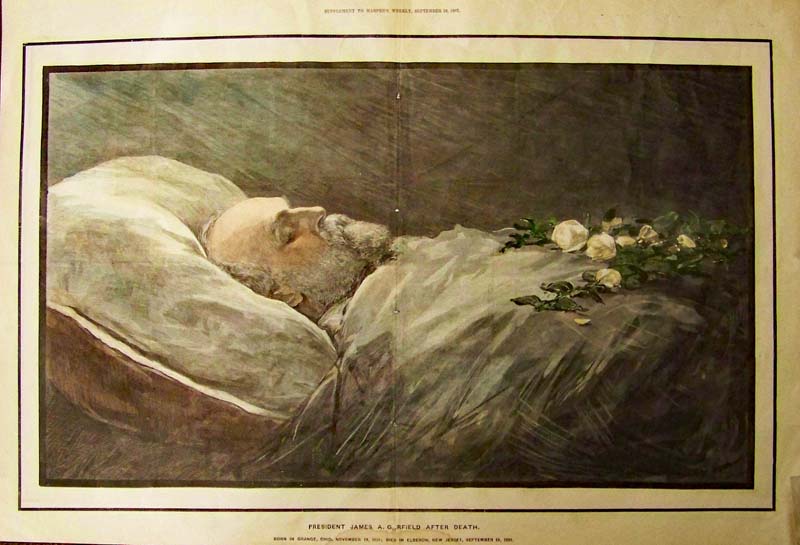
Congress did not deal with the problem of what to do if a President was alive but incapacitated as Garfield was. Nor did the Congress take up the question 38 years later, when Woodrow Wilson suffered a stroke that put him in a coma for days and left him partially paralyzed and blind in one eye for the last year and a half of his Presidency. It was not until the ratification of the Twenty-fifth Amendment to the United States Constitution in 1967 that United States law provided a procedure for what to do if the President were incapacitated.
Only sixteen years had passed between the first and second Presidential assassinations. Nevertheless, whereas Lincoln's assassination had taken place in the closing stages of the Civil War, both the public and the country's political leaders were keen to consider Garfield's murder to be an isolated act unlikely to be repeated in peacetime.[citation needed] Perhaps because the outrage as expressed in newspaper editorials focused specifically on the failure to adequately deal with the rejected office-seeker Guiteau as opposed to the inadequate security protecting the President,[citation needed] the Congress failed to take any measure to provide for Presidential protection. It was not until after the assassination of William McKinley twenty years after Garfield's assassination, that the Congress charged the United States Secret Service, originally founded to prevent counterfeiting, with Presidential security.[66]

The Garfield Tea House, built by the citizens of Long Branch, New Jersey with the railroad ties that had been laid down specifically to give Garfield's train access to their town, still stands today near the location where Garfield died.[67]
Taken from: http://www.history.com/this-day-in-history/president-garfield-shot & http://en.wikipedia.org/wiki/James_A._Garfield_assassination [02.07.2013]

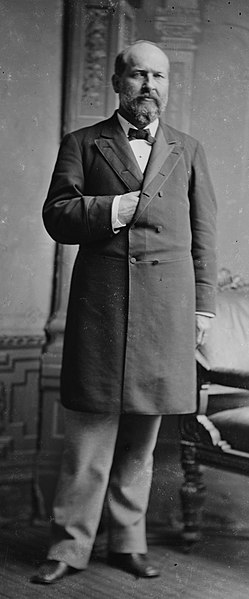
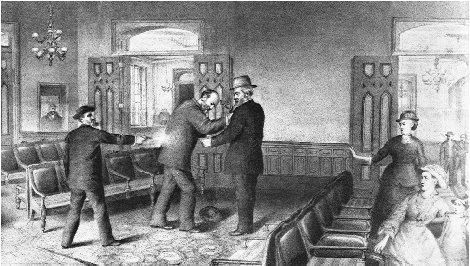


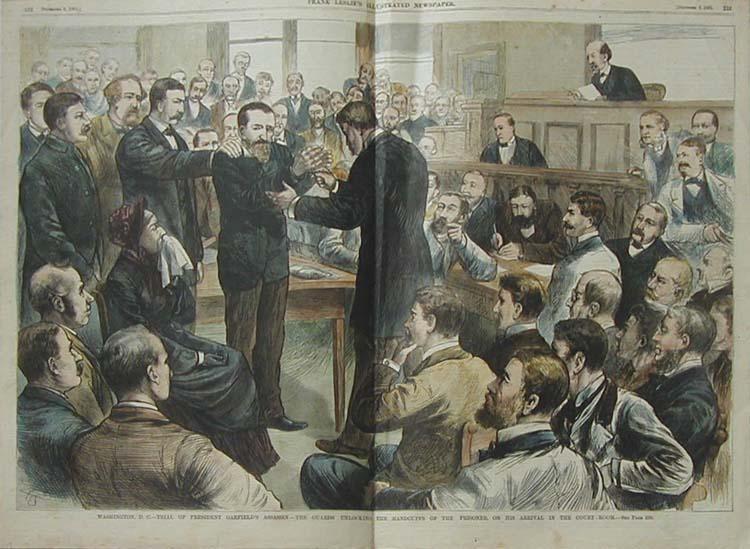
like this , we can do it, l have it, we can do much things, we can use the ip video intercom system ,sip door phone and window intercom.
ReplyDeleteIt is really a great and helpful piece of information. I am glad that you shared this useful info with us. Please keep us informed like this
ReplyDeleteIf you want to explore Palakkad Tourist Places within your budget then you may contact us our travel agent, via a toll-free number, And also you may visit our website for further details.
It is really amazing information. Thanks for sharing.
ReplyDeleteAkshi Engineers Pvt. Ltd. provides high-class Steel Rolling Mill Stand solutions. If you are looking for one of the best Rolling Mill Stand Manufacturers, exporters, and suppliers in Meerut, Ghaziabad, contact our professionals via a toll-free number to get the best Steel Rolling Mill Stand.
Funded Account Forex with Winprofx is an excellent solution for traders who want to showcase their skills in the global forex market without risking their own capital, as it provides the opportunity to trade with company funds while reaping significant profit-sharing benefits. Winprofx has designed its funded account programs to support traders at various levels, whether beginners seeking growth opportunities or experienced professionals looking to scale up their trading accounts with larger capital access. By joining the funded account program, traders gain access to advanced trading platforms, cutting-edge tools, and superior liquidity, which help them implement strategies with high efficiency and precision. The evaluation process is transparent and structured to identify consistent traders who can manage risks wisely while achieving profitable goals. Unlike self-funded trading, where emotions and limitations often hinder performance, a funded account with Winprofx provides a supportive framework that emphasizes discipline, long-term growth, and capital security. The profit split plans ensure that successful traders are rewarded generously for their efforts, creating a win-win ecosystem. This makes Funded Account Forex with Winprofx a smart choice for anyone serious about building a trading career with financial backing, professional tools, and the confidence to trade like a pro in real market conditions.
ReplyDeleteFunded Account Forex-